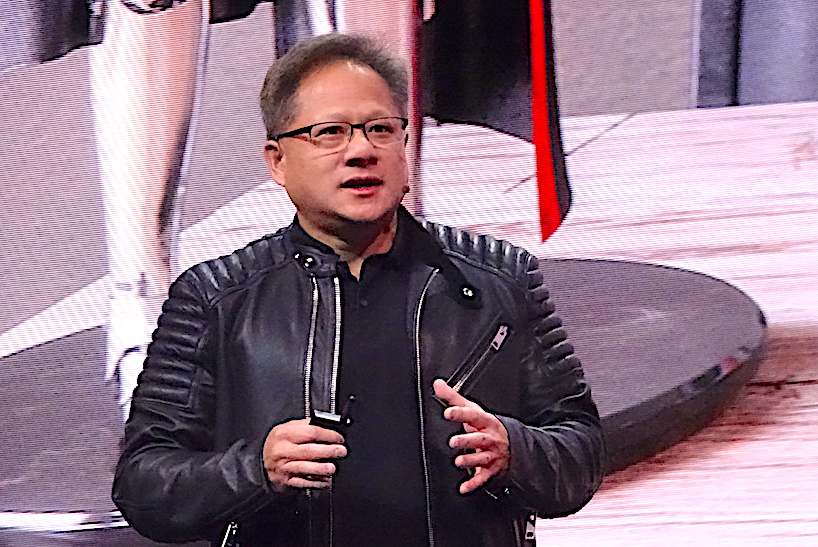 EMERGING TECH
EMERGING TECH
 EMERGING TECH
EMERGING TECH
 EMERGING TECH
EMERGING TECH
Graphics processing units have an inherent advantage over other processing architectures for artificial intelligence. By combining circuitry that is optimized for high-performance interactive visualization with the logic for high-performance statistical processing, GPUs are powering the exciting new field of generative AI.
Generative AI refers to tools that use AI to accelerate computer-aided simulation, modeling, design, engineering and manufacturing. Leveraging sophisticated machine learning algorithms such as generative adversarial networks or GANs, the technology is being used to fabricate a wide range of physical materials, components and objects.
Powered by GPUs and other AI-optimized hardware platforms, developers are also using these tools to render prosthetic limbs, organic molecules and other items from scratch by means of 3D printing, CRISPR and other technologies. And they’re being avidly deployed in the creation, manipulation and refinement of graphics, video, audio, music, text, code and other digital objects.
Generative designs will shape all physical and virtual experiences of the future. Wikibon sees generative AI as the heart of next-generation workbenches in every industry and profession. GPUs will remain the principal processing muscle behind that revolution, even as their role in the larger AI ecosystem becomes more sharply limited due to advances in “tensorcore” processing units, field-programmable gate arrays and more specialized neuroprocessing hardware architectures.
By dint of its dominant position in the GPU-driven AI market, Nvidia Inc. is a major presence in generative design tools. That’s why Wikibon took special note of two recent announcements that strengthen its hand in this burgeoning sector. For starters, Nvidia boosted the processing power of the Quadro AI workbench it sells to designers, engineers and scientists. For another, Nvidia and partner Adobe Systems Inc. announced plans to GPU-optimize the latter’s Sensei AI technology to address the growing demand from creative professionals who are designing sophisticated images, illustrations, animations and experiences for myriad use cases.
Generative AI horsepower was a key theme in Nvidia founder and Chief Executive Jensen Huang’s keynote (pictured, showing GPU-generated visualization in background) at the firm’s recent GPU Technology Conference. He announced the general availability of Nvidia’s new Volta-based Quadro GV100 platform, which addresses the requirements of designers, engineers and scientists in the automotive, architecture, engineering, entertainment and healthcare sectors.
Within a single chassis, this new visual generative workstation integrates two GV100 cards via Nvidia NVLink interconnect technology to scale memory (32 gigabytes of high-bandwidth memory capacity) and performance (up to 118.5 teraflops). It also supports simple access, via the Nvidia GPU Cloud to a comprehensive catalog of containerized, certified and GPU-optimized AI and high-performance computing software tools, from Nvidia and partners, that can be downloaded and installed on Quadro workstations.
In terms of its generative bonafides, Nvidia’s new workstation incorporates generative deep learning algorithms that help designers more rapidly perform complex simulations, explore more design choices, and optimize designs for performance and cost. They provide supercharged performance in several key generative capabilities:
Nvidia also announced the general availability of a virtual version of this new workstation, Quadro vDWS for the data center, which also adds support for the Nvidia Tesla V100 GPUs and enables secure access to these generative AI capabilities from any connected device.
Nvidia’s announcement of the latest evolution in its Adobe partnership was also important news in the generative AI arena. GPU optimization of Adobe Sensei – which is the extensible AI and machine learning framework of Adobe Cloud Platform — will improve performance of generative AI applications for mixed reality, immersive media and other content-rich intelligent solutions that are built in Adobe Creative Cloud and Experience Cloud.
There is a huge and growing demand among creative, design, media and marketing professionals everywhere for AI-powered tools to generate sophisticated experiences. Among the features that Sensei already powers are auto lip sync in Adobe Character Animator CC, face-aware editing in Photoshop CC, image analysis for Adobe Stock and Lightroom CC and auto-tagging in Adobe Experience Manager. Going forward, the partners have committed to optimizing Sensei AI services for Nvidia hardware in the cloud and at the edge. In addition to ongoing performance and functionality enhancements, they plan to focus on improving the accessibility and consumability of Sensei AI services to Nvidia’s developer ecosystem.
Here’s a good discussion by Adobe on the power of generative design tools in the cloud:
THANK YOU